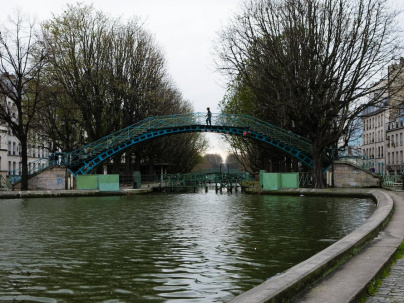



In 1802, Napoleon Bonaparte decided to remedy the problem of Paris's poor drinking water supply. Jean-Antoine Chaptal, the city's prefect, proposed that a 16th-century project to canalize the Ourcq river (whose source lies some 100 km northeast of Paris) be revived. The digging was carried out relatively quickly, thanks to money raised from a new tax on wine, between 1802 and 1825. The canal's golden age was from the 19th to the mid-20th century, when traffic was very heavy (not only drinking water for the city, but also goods, supplies and building materials). Today, the Canal Saint Martin is open 363 days a year, and is a popular place for Parisians to stroll (or picnic) along its banks, which are now listed.